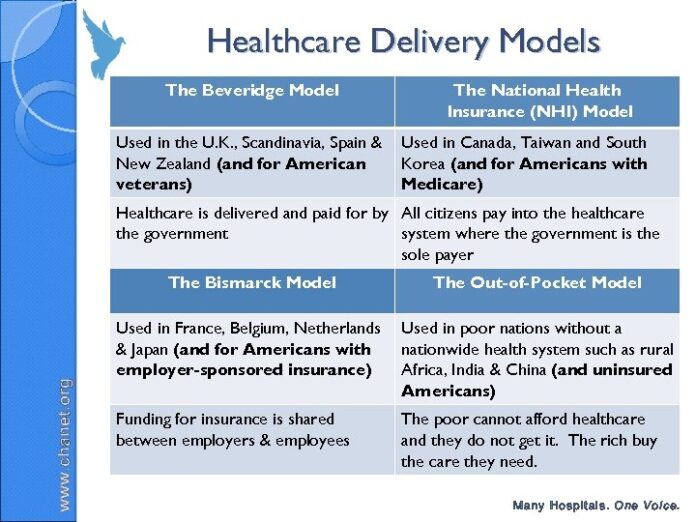There are four primary health care models operating in industrialized countries: The Beveridge mode, the Bismarck model, the National Health Insurance or Tommy Douglas mode, and the out-of-pocket model.
Health Care Models of Non-US Countries
The Beveridge model or “Socialized Medicine” provides health care for all citizens and is financed by the government through tax payments. This model is utilized by countries such as Great Britain, Spain, and New Zealand.
The Bismark model utilizes an insurance system that is a joint financial effort between employers and employees through payroll deduction; however, unlike in the US insurance industry, Bismarck-type health insurance does not make a profit and has to include all citizens. Doctors and hospitals tend to be private in the Bismarck model with this model operating in countries such as Germany, France, Belgium, Netherlands, Japan, and Switzerland.
The National Health Insurance model has elements of both Beveridge and Bismark in that it uses private-sector providers, but the payment comes from a government-run insurance program that all citizens fund through a premium or tax. With this, the administrative and program costs are less expensive than American-style for-profit insurance plans. This model also controls costs by limiting the medical services that they can pay for, or by making patients wait for treatment. This model is found in Canada.
The out-of-pocket model is found in the majority of the world and is used in countries that do not provide any national health care system. This model allows for people who can pay for health care to receive it and people who can’t afford it to not receive health care.
The US health care model has systems that are from all four of these models and provides a vast array of different health care and coverage for various sectors and demographics of the population resulting in disjointed and costly health care for Americans.
Analysis:
With so many health care elements that provide different coverage in the US as compared to different countries that have more unified models and systems of accessing their health care, this can be an issue for stroke patients in trying to find insurance that covers them or finding a network of doctors or facilities to get treatment for. This can be a potential point of problems and a pain point in the process of rehabilitation for patients as access to programs, support and facilities are contingent on the type of health care coverage and the search for these programs and resources are dependent on the patient and what insurance they might have.




